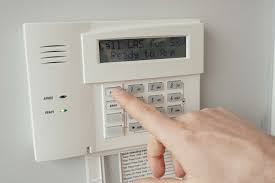
Removing an old home alarm system,
such as one from Protection One, can seem daunting, but with a systematic approach, you can safely and effectively dismantle it. Whether you’re upgrading to a new system or simply no longer need the old one, following these eight steps will ensure that the removal process is smooth and safe.
1. Assess the Alarm Components That Need to be Removed
Before diving into the removal process, take a comprehensive look at the alarm system’s components. Identify all key parts, including the control panel, sensors, sirens, and any associated wiring. Knowing what you’re dealing with will help you plan the removal process more effectively and ensure you don’t miss any crucial components.
2. Notify Your Alarm Company to Avoid a False Alarm
Contact Protection One or your alarm monitoring company to inform them of your intention to remove the system. This step is crucial to prevent false alarms during the disconnection process. The alarm company can also provide guidance or send a technician if needed, ensuring a smooth transition.
3. Disable the Alarm or Put It Into Maintenance Mode
Before starting any physical removal, disable the alarm system or put it into maintenance mode. This step helps to prevent the system from triggering any alerts while you’re working on it. Follow the manufacturer’s instructions for disabling or putting the system into maintenance mode, which is typically done through the control panel or the system’s app.
4. Disconnect the Security Sirens
The next step is to disconnect the security sirens. Sirens are often wired directly to the alarm system, so you’ll need to safely detach them. Locate the sirens, which are usually installed outside the home or in a conspicuous indoor location. Unscrew or unmount the sirens and disconnect the wiring, ensuring you do this carefully to avoid damage or causing an accidental alarm.
5. Detach the Power Supply to Prevent Injuries
To prevent any risk of electrical shock or damage, you must detach the power supply. This usually involves turning off the power source at the breaker box or unplugging the system’s power adapter. Ensure that the system is fully powered down before proceeding with the removal of other components.
6. Remove the Old Control Panel
The control panel is the central hub of your alarm system. After disconnecting the power, carefully remove the control panel from its mounted location. This usually involves unscrewing it from the wall or its enclosure. Once removed, disconnect any remaining wires connected to the panel. Keep in mind that some control panels might have backup batteries, so be sure to handle these components carefully.
7. Disconnect and Remove Sensors
Alarm systems typically include various sensors such as door/window contacts and motion detectors. Carefully disconnect these sensors from their mounting locations and wiring. Depending on the type of sensor, you might need to unscrew or unclip them. Be cautious not to damage the wall or surfaces during this process.
8. Clean Up and Verify System Removal
Once all components have been removed, inspect the area for any leftover wiring or debris. Ensure that all connections are properly disconnected and that no parts of the old system are left in place. Clean up any dust or residue from the removal process and verify that the alarm system is fully removed and inactive.
Conclusion
Removing an old alarm system, such as one from Protection One, involves several careful steps to ensure safety and effectiveness. By assessing the components, notifying your alarm company, and following a structured removal process, you can successfully dismantle the system. This step-by-step guide provides a clear roadmap for safely removing your old alarm system and preparing for a new setup if needed.








